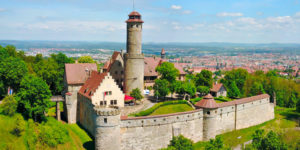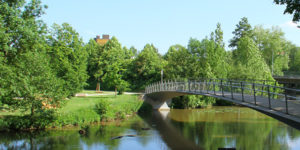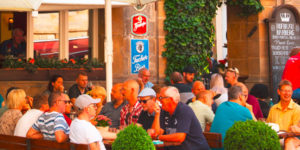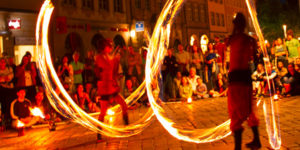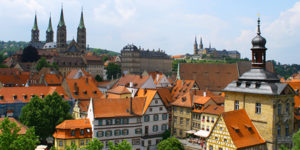While the work on the building, started in 1717, could be completed in 1720, the realization of the outdoor facilities lasted until the year 1722. Until 1787, the house remained in the possession of the Bamberger Böttinger family. Before the “Association Concordia” took charge of the castle in 1837, the ownership changed several times. After almost 100 years, the city of Bamberg acquired the water castle in 1935.
Previously, an inn was built in the Concordia, which remained under the city of Bamberg until 1947. In the lower garden, a boathouse was built in 1894, which in the following years became the meeting place of the Bamberg rowing club. Between 1947 and 1955, the water castle Concordia was used by the Philosophy and Theology College. From 1955, the State Institute of Geochemistry took over the premises of the building.
International House of Artists “Villa Concordia”
In 1998 the Concordia became the seat of the House of Artists “Villa Concordia”. With the task to spread art and bring it into conversation, it was then inaugurated by Prime Minister Stoiber.
Since then, the scholarship holders of the “Villa Concordia” have been coming and going here. Each year, the House of Artists offers up to twelve scholarships for visual art, literature and music artists, who can use it to work on independent projects under the shelter of financial security. The person who will receive a scholarship will be decided by the Board of Trustees and the experts of the House of Artists, who are elected every year.
Events
The Concordia often hosts exhibitions, readings and concerts by the current scholarship holders. In this context, the artists can present their works to the public. In addition, the House of Artists has excellent contacts in the art scene, giving artists the opportunity to network with galleries, art institutions or museums around the world after the scholarship.
The Concordia is located directly on the western Regnitz bank. Although access is via Judenstraße, the best view of the imposing building is obtained from the “Mühlwörth” on the opposite bank.

